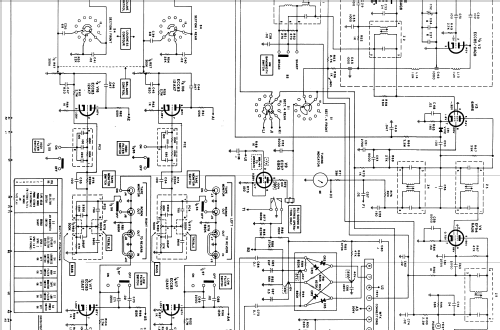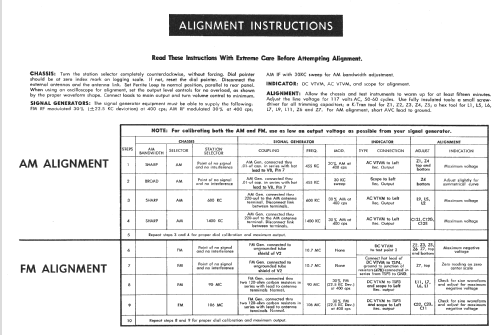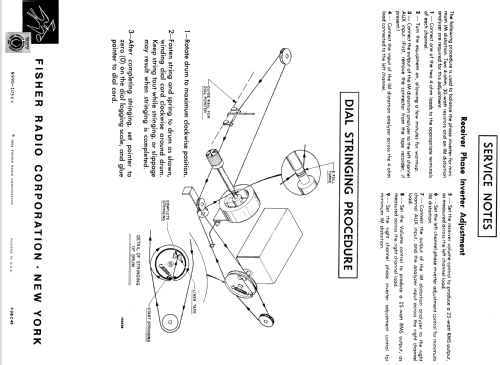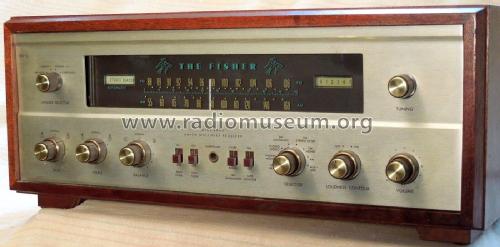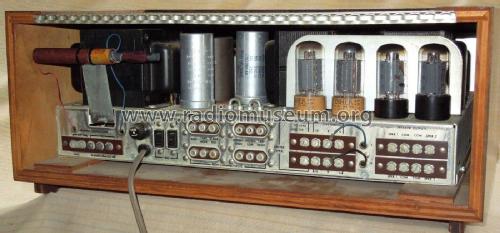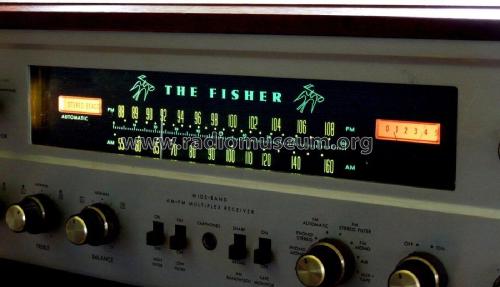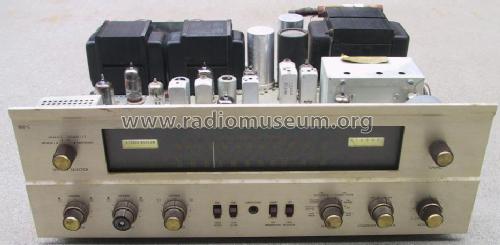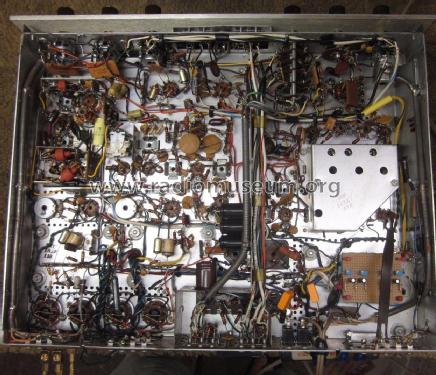- Country
- United States of America (USA)
- Manufacturer / Brand
- Fisher Radio; New York (NY)
- Year
- 1963–1968
- Category
- Broadcast Receiver - or past WW2 Tuner
- Radiomuseum.org ID
- 26710
Click on the schematic thumbnail to request the schematic as a free document.
- Number of Tubes
- 22
- Valves / Tubes
- EC97 ECC85 6HR6 EF94 EF94 EF94 EF93 EK90 EC97 ECC83 ECC83 ECC83 ECC83 ECC83 7591 7591 7591 7591
- Main principle
- Superhet with RF-stage; ZF/IF 455/10700 kHz
- Tuned circuits
- 7 AM circuit(s) 13 FM circuit(s)
- Wave bands
- Broadcast (BC) and FM or UHF.
- Power type and voltage
- Alternating Current supply (AC) / 220 Volt
- Loudspeaker
- - This model requires external speaker(s).
- Power out
- 60 W (75 W max.)
- Material
- Metal case
- from Radiomuseum.org
- Model: 800C - Fisher Radio; New York NY
- Shape
- Chassis only or for «building in»
- Dimensions (WHD)
- 445 x 146 x 380 mm / 17.5 x 5.7 x 15 inch
- Notes
- HiFi-Stereo-Tuner-Verstärker. Ausgangsleistung 2× 33 W (Sinus); Nußbaum-Gehäuse gegen Mehrpreis (120,- DM).
Vertrieb über ELAC. 4 ZF+3 Begrenzerstufen. Frequenzbereich: 20...20.000 Hz +/- 1 db. Brumm und Rauschen -85 db
- Net weight (2.2 lb = 1 kg)
- 17 kg / 37 lb 7.1 oz (37.445 lb)
- Price in first year of sale
- 2,760.00 DM
- External source of data
- erb
- Source of data
- Handbuch VDRG 1966/1967
- Other Models
-
Here you find 591 models, 504 with images and 204 with schematics for wireless sets etc. In French: TSF for Télégraphie sans fil.
All listed radios etc. from Fisher Radio; New York (NY)
Forum contributions about this model: Fisher Radio; New: 800C
Threads: 1 | Posts: 1
The Fisher 800C is one of the best all-tube broadcast receivers I have ever owned. It is exceptionally sensitive with excellent selectivity and stereo performance. As such, this radio is my all-time favorite broadcast tube receiver. It's expensive on the collector market but it is worth it.
Fisher launched this 800C over their 500C for those customers who also demanded AM broadcast coverage. Which it does very well given the presence of an RF amplifier (EF93) before the mixer in the AM chain. The only thing I would have liked is the use of an EM84 tuning indicator instead of the moving coil meter that was used, but that is a matter of opinion.
The radio differs from its contemporary US or Japanese broadcast receivers of the time. When looking at the bottom of the chassis, one will see many European components are used, as well as typical European construction techniques. I do not know where the design was done but there must have been a strong European influence because to me, the insides appear much more like European broadcast radios than American radios of the time.
The diagrams on this site I scanned from the original Fisher service manual which I bought on eBay but I make it avaialbe to you for free. I scanned the manual in it's entirely in high resolution and as continuous diagrams. Unfortunately a scan like this requires too much server space. If you want a copy of the original scan, please email me at fisher800c[A*T]gmail.com
Loek d'Hont, 18.Jun.09

